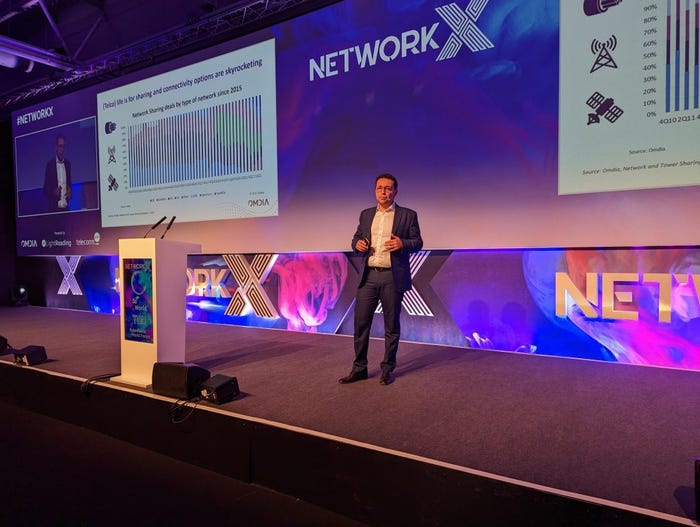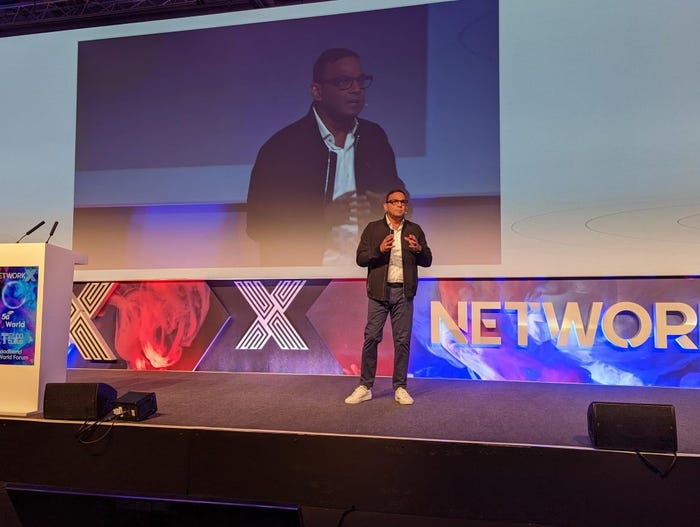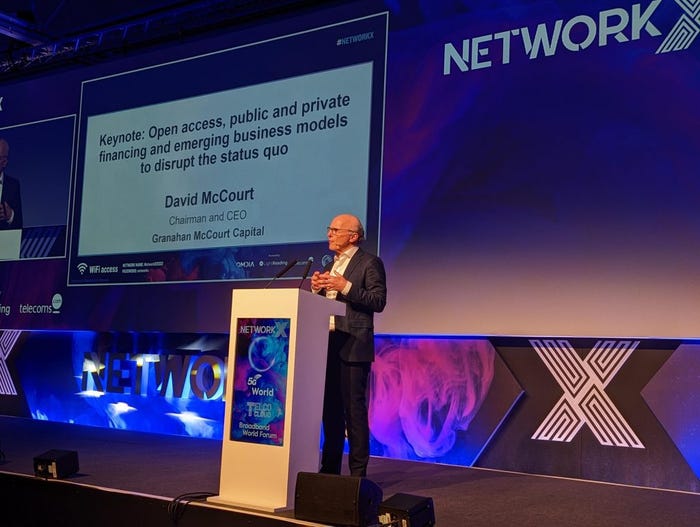Telcos navigate an industry in flux at Network X 2022
Initial themes at the Network X 2022 trade show included how the industry is changing to incorporate new players and business models, and how telcos can thrive rather than crumble in the face of that change.
October 18, 2022

Initial themes at the Network X 2022 trade show included how the industry is changing to incorporate new players and business models, and how telcos can thrive rather than crumble in the face of that change.
Headline speakers from top telecoms firms at day 1 of the Amsterdam event reflected on the changing state of the telecoms industry. They surveyed its relationship with hyperscalers, how fragmented network ownership is disrupting market dynamics, and where the revenue opportunities will be for operators in a decade’s time.
Dario Talmesio, Research Director, Service Provider Strategy and Regulation at analyst firm Omdia kicked things off with a state of the market presentation, in which he reflected on how a multi-vendor network ecosystem will enable alternative business and how the market can best deal with the challenges of competition, multiple stakeholders, and regulation.
He analysed how market structures are changing and asked what the future is for telco service providers in the face of this change. He also noted how the pandemic provided a boon to broadband as the world was locked in their houses, which has expanded the market, and described telco and hyperscaler partnerships as ‘boundless’.
Talmesio went on to discuss how operators are creating new identities and sketched out three categories – utility operators, which focus on the network and wholesale, orchestrators, who manage their own and third party infrastructure, and TechoCos, which describes a kind of multi business, multi tech platform.

Dario Talmesio
Sowmyanaryan Sampath, CEO of Verizon Business followed and spoke about how to identify infrastructure to boost agility, better manage costs and reduce complexity, as well as how telcos can future-proof their 5G service-revenues.
He said 5G is being adopted twice as fast as 4G, and 5G commercialisation is about ecosystems. 5G has already changed the world, he claimed citing the existence of fancy retail installations, NFTs, healthcare, and AR and VR in education. There was a lot of emphasis placed on autonomous vehicles and how big a part of telecoms growth that represents, and he said the industry will eventually connect ‘anything that moves’ – and presumably some things that don’t as well.
“What more proof do you need that 5G is real today?’ he asked the room. “There are three diverse revenue streams already producing revenue for Verizon today, mobility, fixed wireless access and private networks. As a student of corporate history, that is almost unheard of so early in the deployment cycle.”

Sowmyanaryan Sampath
David McCourt, Chairman and CEO of Granahan McCourt Capital, then spoke about new and emerging business models and approaches that are disrupting the status quo in telecoms, and how to future-proof fibre and 5G revenues via wholesale.
He reflected on how the business models of telcos changed dramatically at the turn of the millennium, which proved massively disruptive, and looked forward to what the next disruptive changes might be. He also predicted more rapid change to come and suggesting that open access wholesale networks are the thing to get into.
“If you take the speed of change from today, back to when the internet was invented, what cost a million dollars when the internet was invented, cost one dollar today,” he said. “You can measure it any way you want. You can measure the speed, you can measure capacity, you can measure flexibility, storage cost, anywhere you want.”

David Mccourt
Federico Guillen, President Network Infrastructure Business Group at Nokia delivered a more top down talk titled ‘Networks are Life’, in which he waxed on the integral role telecoms now plays in society as a whole, where technologies like 5G might change business and personal life in the future, and how the industry can make the most out of the opportunities that come with that change.
He made the point that the pandemic lockdowns would have been much worse without the broadband we have, though of course the other way of putting that is that is governments might not have been able to enforce them without the high speed home internet connections.
He sketched out a fairly generalised future in which there are opportunities for fibre combine with other tech, and noted that automation is key for this to scale up. Faster is not enough, we were told, and reliability and security will be of increased value in the future.

Federico Guillen
A panel session wrapped up the morning of keynotes, which was framed under the title of ‘Service Provider 2030 – How will evolving market dynamics, private equity, Hyperscalers, shifting revenue priorities and more shape the Service Provider operating model’.
Subjects debated included to what extent hyperscalers will be competing and partnering with service providers in tomorrow’s ecosystem; how increased market fragmentation will evolve and focus the service provider’s network service business model; and how and where service providers will invest to protect and grow market share.
One panellist asked what the core assets of operators are now, and how telcos need to find new ways of finding value for end customers. The relationship between hyperscalers and telcos was touched upon, with one panellists suggesting telcos need to own their own destiny, seemingly making the point they shouldn’t reply so much on hyperscalers. Another touched on the idea of what value operators will bring in the future saying When everything is connected, its hard to have it as value.
The issue of fragmentation was also explored, with panel seeming to agree there are too many players laying fibre right now for it to be efficient, how networks need to merge, and the importance of small cells for future growth was pointed to. ‘empires are being created in Europe on small cells’ said one panellist.

All in all the themes that came through today were that the telco industry is about to go through significant changes, both in terms of what and how it sells, and in terms of the companies it works with. Telcos have various approaches to how they work with hyperscalers, but caution was advised in terms of retaining the business of connectivity.
The point was also made that the telco industry has always been in flux, and business models can collapse on a dime as connectivity is increasingly commoditised. That’s not to say the overall message came across as gloomy, but rather there are areas in which telcos should think about pivoting towards if they want to stay relevant in the next 20 years.
Get the latest news straight to your inbox. Register for the Telecoms.com newsletter here.
Read more about:
OmdiaAbout the Author(s)
You May Also Like








.png?width=300&auto=webp&quality=80&disable=upscale)


_1.jpg?width=300&auto=webp&quality=80&disable=upscale)


.png?width=800&auto=webp&quality=80&disable=upscale)